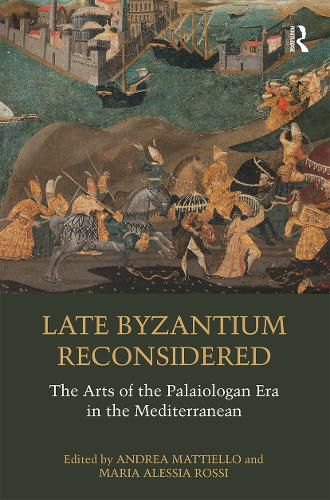Readings Newsletter
Become a Readings Member to make your shopping experience even easier.
Sign in or sign up for free!
You’re not far away from qualifying for FREE standard shipping within Australia
You’ve qualified for FREE standard shipping within Australia
The cart is loading…






Late Byzantium Reconsidered offers a unique collection of essays analysing the artistic achievements of Mediterranean centres linked to the Byzantine Empire between 1261, when the Palaiologan dynasty re-conquered Constantinople, and the decades after 1453, when the Ottomans took the city, marking the end of the Empire. These centuries were characterised by the rising of socio-political elites, in regions such as Crete, Italy, Laconia, Serbia, and Trebizond, that, while sharing cultural and artistic values influenced by the Byzantine Empire, were also developing innovative and original visual and cultural standards.
The comparative and interdisciplinary framework offered by this volume aims to challenge established ideas concerning the late Byzantine period such as decline, renewal, and innovation. By examining specific case studies of cultural production from within and outside Byzantium, the chapters in this volume highlight the intrinsic innovative nature of the socio-cultural identities active in the late medieval and early modern Mediterranean vis-a-vis the rhetorical assumption of the cultural contraction of the Byzantine Empire.
$9.00 standard shipping within Australia
FREE standard shipping within Australia for orders over $100.00
Express & International shipping calculated at checkout
Late Byzantium Reconsidered offers a unique collection of essays analysing the artistic achievements of Mediterranean centres linked to the Byzantine Empire between 1261, when the Palaiologan dynasty re-conquered Constantinople, and the decades after 1453, when the Ottomans took the city, marking the end of the Empire. These centuries were characterised by the rising of socio-political elites, in regions such as Crete, Italy, Laconia, Serbia, and Trebizond, that, while sharing cultural and artistic values influenced by the Byzantine Empire, were also developing innovative and original visual and cultural standards.
The comparative and interdisciplinary framework offered by this volume aims to challenge established ideas concerning the late Byzantine period such as decline, renewal, and innovation. By examining specific case studies of cultural production from within and outside Byzantium, the chapters in this volume highlight the intrinsic innovative nature of the socio-cultural identities active in the late medieval and early modern Mediterranean vis-a-vis the rhetorical assumption of the cultural contraction of the Byzantine Empire.